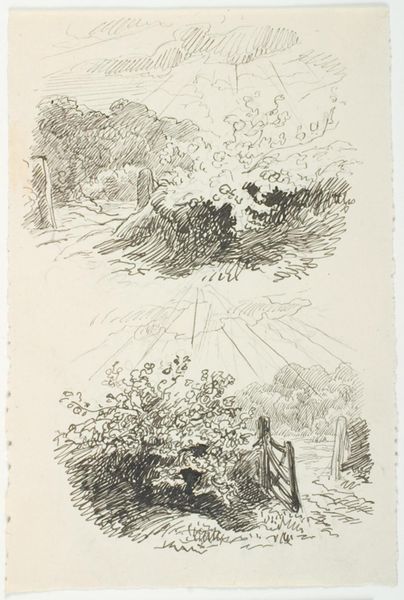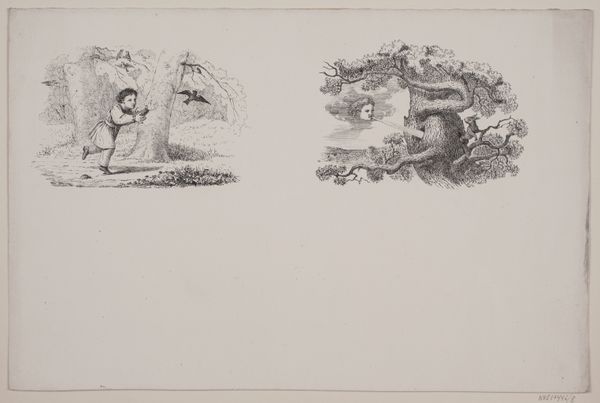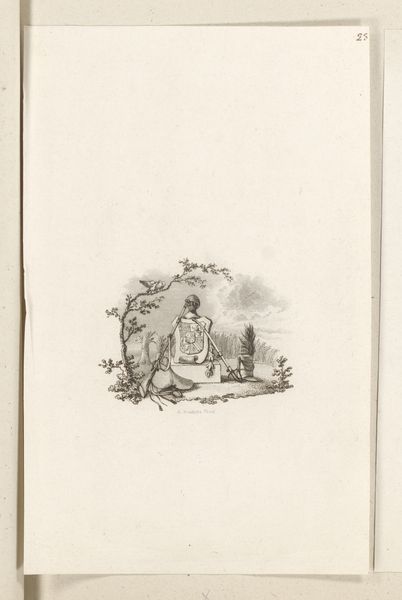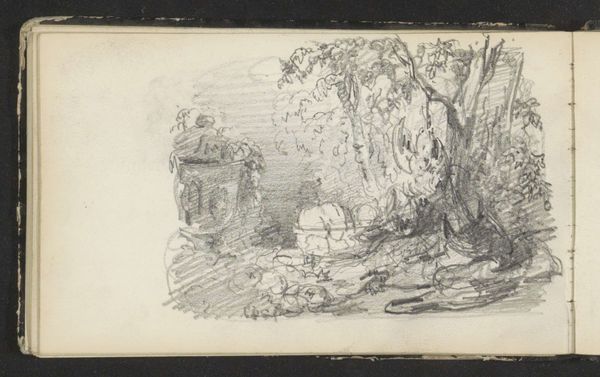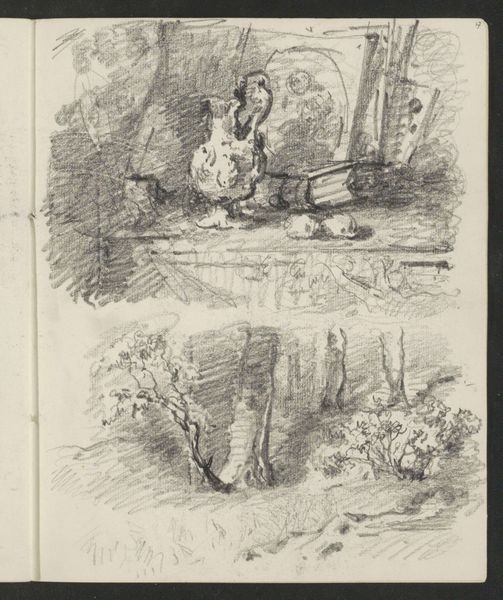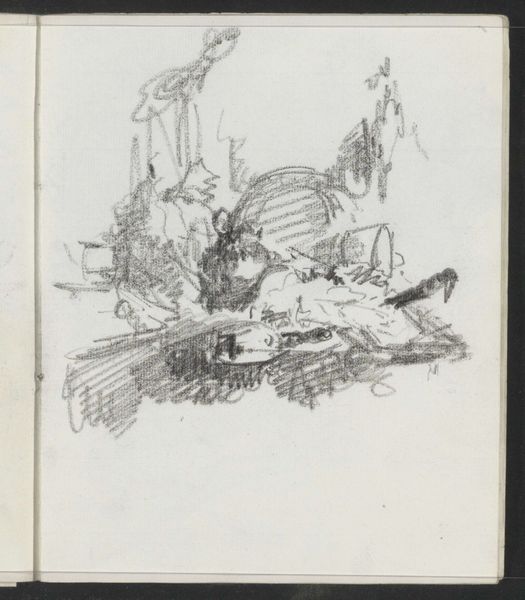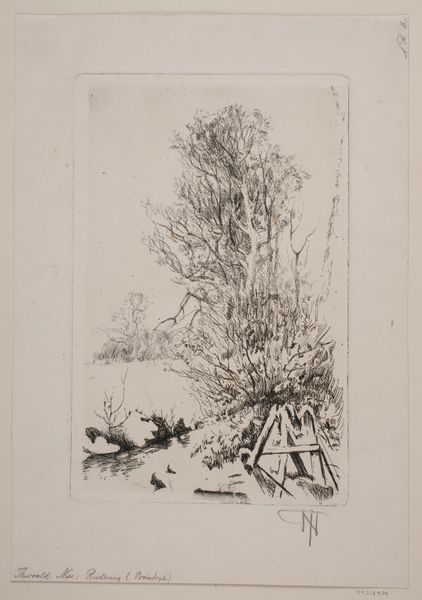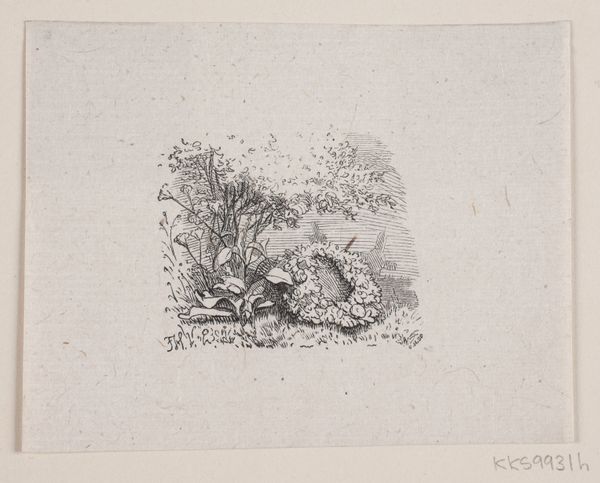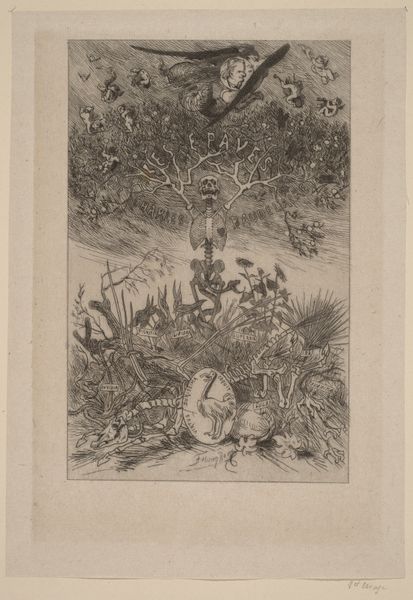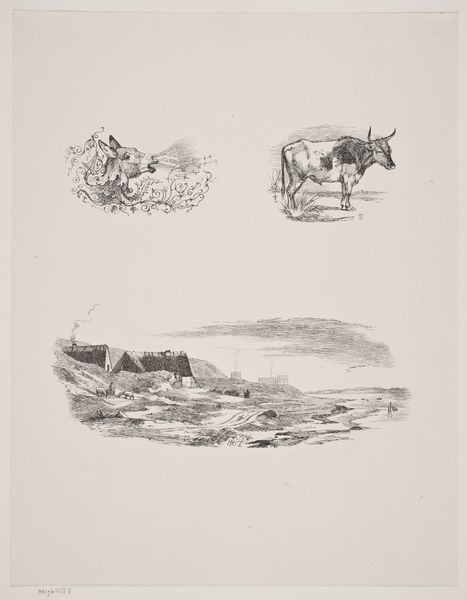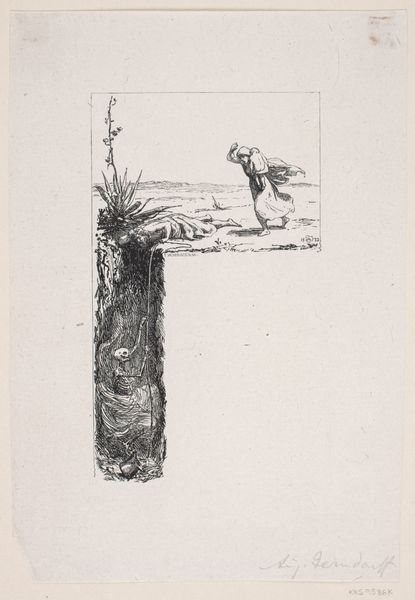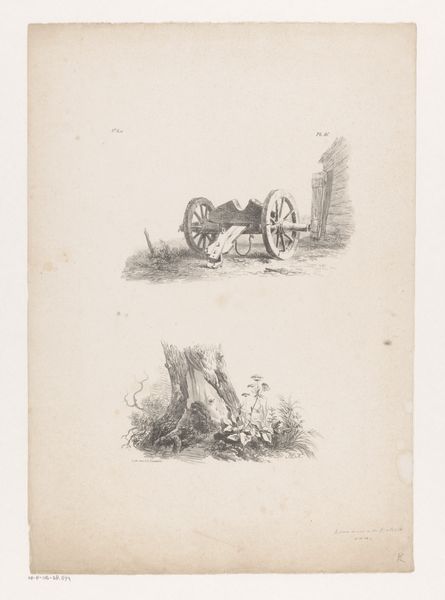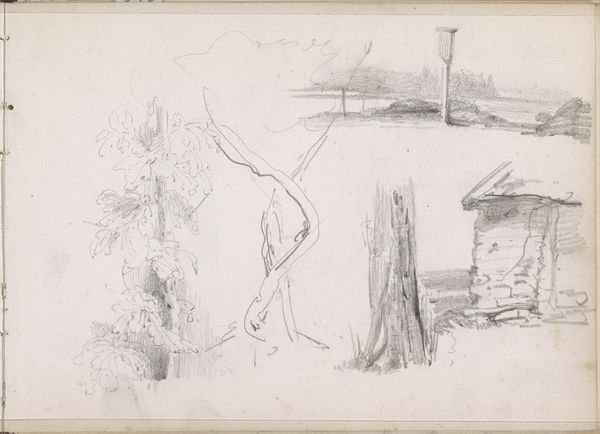
To illustrationer til W. Hey "Halvthundrede Fabler for Børn" 1848
0:00
0:00
drawing, lithograph, print, ink
#
drawing
#
amateur sketch
#
light pencil work
#
lithograph
# print
#
pencil sketch
#
incomplete sketchy
#
landscape
#
personal sketchbook
#
ink
#
ink drawing experimentation
#
romanticism
#
pen-ink sketch
#
sketchbook drawing
#
pencil work
#
genre-painting
#
sketchbook art
Dimensions: 238 mm (height) x 139 mm (width) (bladmaal)
Editor: So, we're looking at "To illustrationer til W. Hey 'Halvthundrede Fabler for Børn'," created around 1848 by an anonymous artist. It's a lithograph print, featuring, what looks like, scenes from children's fables. The composition feels quite divided, almost like two separate sketches placed on top of each other. I'm particularly struck by the contrast between the upper scene with the animals in some kind of farmyard, and the lower one depicting a boy running towards swans. What stands out to you in this piece? Curator: Well, the division is interesting, isn't it? It highlights the distinct spheres of childhood, the farmyard embodying labour and domesticity, while the swans evoke leisure and an encounter with nature. Lithography, especially in the mid-19th century, was becoming a key medium for circulating images widely, impacting how these moral tales were distributed to and consumed by a growing literate audience. Does that separation of scenes remind you of anything in particular? Editor: I suppose it is interesting to think about the audience of children and what they would gain from seeing the world represented this way. Maybe the split shows two very different possibilities for life, innocence and industry... Almost like two sides to a moral coin. But if it’s meant for a younger audience, why not merge both scenes for legibility, maybe? Curator: Precisely! Its separation can lead us to considering the pedagogical goals embedded in such imagery. How do such illustrated books contribute to the construction of childhood itself, and what social values are being transmitted in this way? Who exactly does this representation of childhood serve? Editor: I see, the framing highlights the values the art transmits. That makes me think differently about it! Curator: Indeed. Examining the context helps unlock its deeper meaning. Editor: This really highlights how socio-political conditions affect art's accessibility! Thanks for sharing your perspective. Curator: Likewise. These are the kinds of discussions that breathe life into historical artwork.
Comments
No comments
Be the first to comment and join the conversation on the ultimate creative platform.
